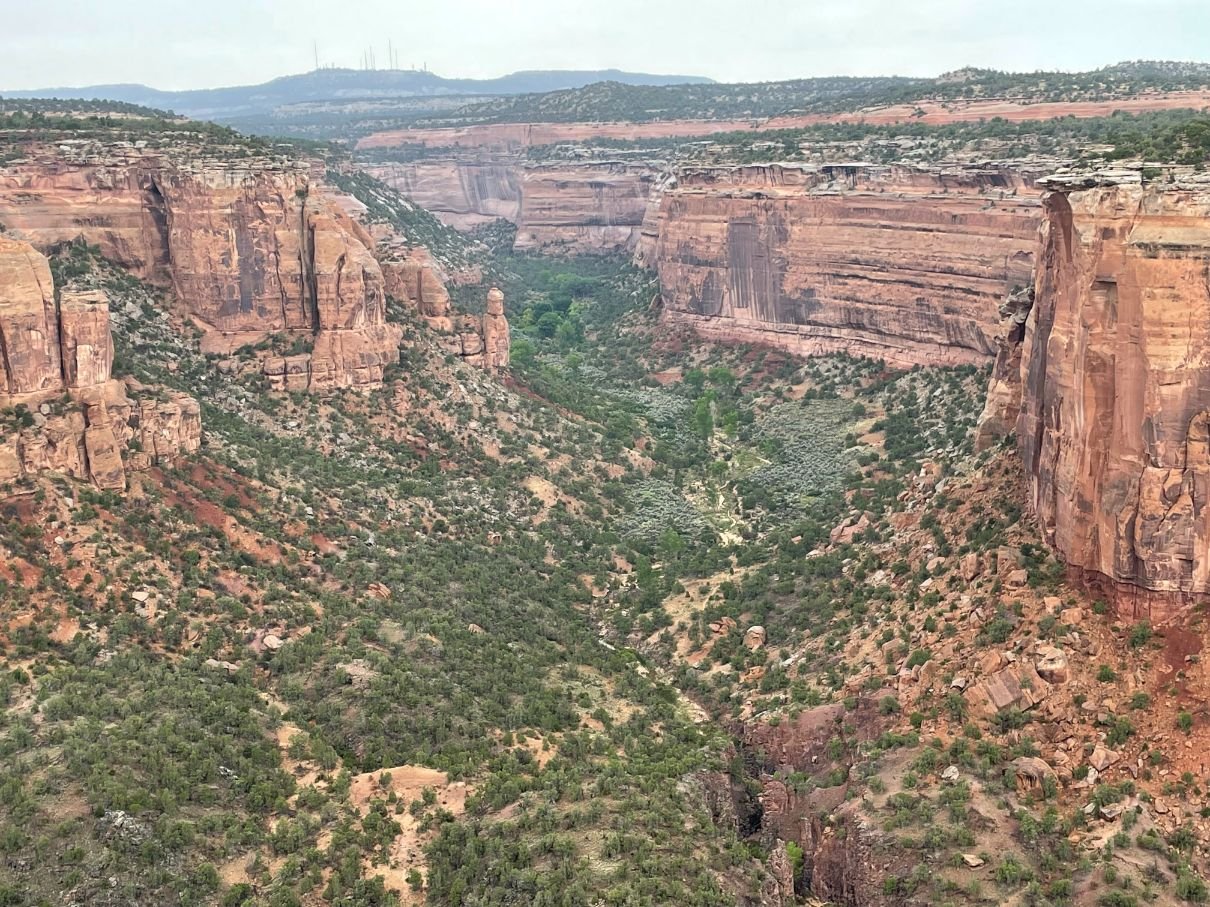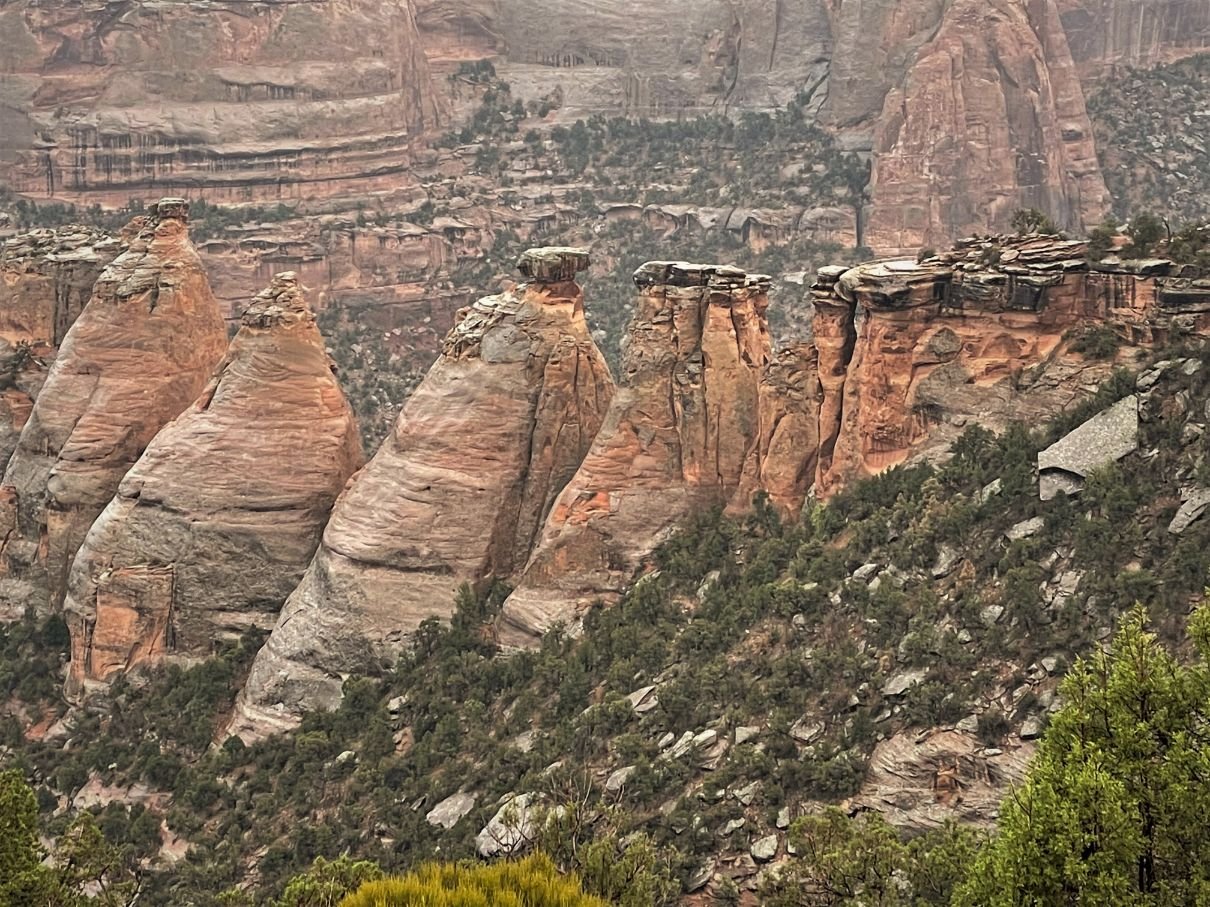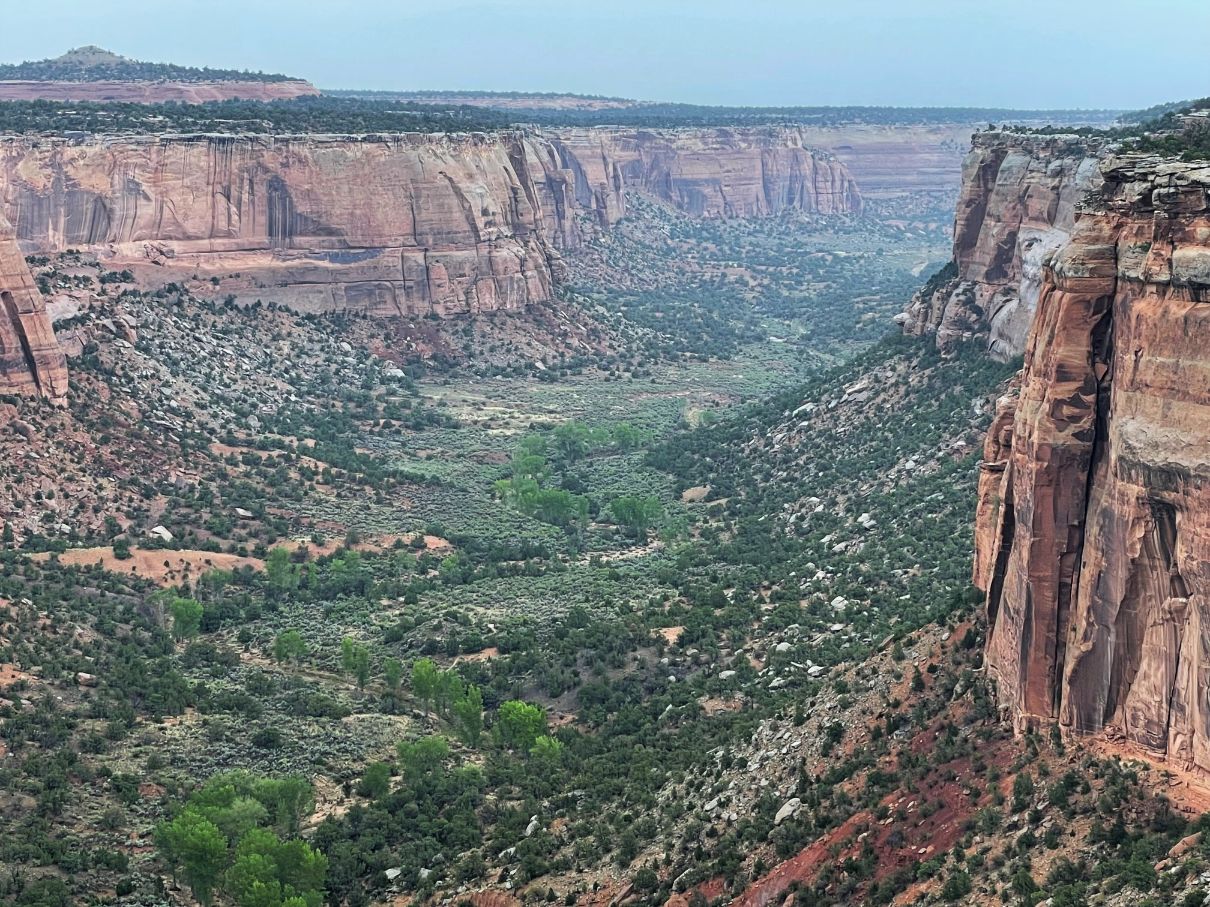
Big, bold Colorado National Monument inspires awe

It’s hard to wrap your head around the Colorado National Monument. It holds you spellbound as you look out at this famed, rugged landscape of the American West. Towering sandstone monoliths as tall as 450 feet act as sentinels in a vast plateau with sheer-walled canyons as deep as 500 feet. And the views stretch for what seems like eternity.
The monument, which protects 23,000 acres, is a geologic treasure sculpted by erosion that occurred over the course of millions of years. Massive, colorful formations take centerstage, including rock spires, domes, arches, windows, pedestals and balanced rocks.
Located on the northeast of the Colorado Plateau, this natural gem joins other well-known sites, including the Grand Canyon, Arches National Park, Capitol Reef, Mesa Verde and more, that share a landmass covering the Four Corners region of the country.
Thanks to the herculean efforts of one man, John Otto, the place was designated a National Monument back in 1911. Otto orchestrated a successful campaign to have his “backyard” recognized by the National Park Service. The reclusive canyon dweller felt like the landscape was “the heart of the world” to him. He believed it needed to be promoted and preserved by the U.S. National Park Service. Otto’s efforts were aptly rewarded, as he became the monument’s first superintendent – a job he happily did until 1922 for a mere $1 a month! We also owe Otto a debt of gratitude for carving out a number of the trails still in existence today.
Unfortunately for Otto, though, his eccentric, off-the-grid lifestyle was the reason his wife Beatrice left him after only a few weeks into their marriage. She found the reality of existing in this remote and wild spot to be far from her romantic ideal, writing, “I could not live with a man to whom even a cabin was an encumbrance.”
When distinguishing between a National Park and a National Monument (a difference I tend to blur), one needs to understand the main reason for the land’s preservation. The former is valued for its scenic, educational and recreational values, while the latter is protected for its cultural, historic and/or scientific values.
To best appreciate the Colorado National Monument, take the historic Rim Rock Drive, either from the west entrance off of Highway 340 in Fruita or from the east access off of Monument Road in Grand Junction. This is the only paved road through the monument and allows you to explore 23 miles of its beautiful scenery. Beware, the road is narrow and steep in some sections with dizzying drop-offs.
On average, it takes about 45 minutes to an hour to do the Rim Rock Drive, but if you want to hike or stop and take pictures, you’ll need to allow for more time. As you drive, you’ll be climbing from the valley floor along the mighty Colorado River to the fiery-hued Uncompahgre Plateau. You’ll ascend switchbacks to the mesa tops and then descend back down.
Get out of your car for a more up close and personal experience with some of the noted highlights via several short and moderate trails. Otto’s Trail, for example, leads you through woodlands to an overlook with a panorama featuring formations like Sentinel Spire, Pipe Organ, Independence Monument and Praying Hands; whereas, Canyon Rim to Window Rock offers hikers spectacular vistas of the colossal stone towers from a looped pathway along the cliff edge. Devil’s Kitchen takes you to the boulder-ringed grotto of the same name. And Coke Ovens provides a sweeping vista of the ginormous Coke Ovens formation. Named after the dome-shaped ovens that once made fuel coke from coal, these rounded rocks were carved over the years by wind and water. They sit one after another in a perfectly lined up row.
You might luck out and see desert bighorn sheep on your hikes or as you drive, though these mammals blend into the terrain and are known to shy away from any human contact. I was fortunate to come upon a few on the side of the road, munching away at the vegetation. It was a pinch-me moment and one I savored.Birds are more visible. There are dozens of species that make their home in the area, including ravens, hawks, eagles, quail and turkey vultures.
If you’re up for more hiking, you’ll be glad to know there’s over 43 miles of trails throughout the monument. And for those who want to spend more time exploring this natural jewel, there’s one established campground (available by reservation) or you can get a free backcountry camping permit and set up your own private base.
To learn more visit nps.gov/colm/index.htm.
















































